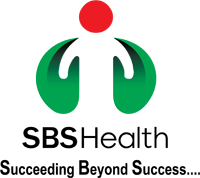Robotic Partial Nephrectomy: Procedure, Benefits, Recovery & Cost

Treatment Duration
2 Hours
------ To ------3 Hours
Treatment Cost
₹ 1,80,000
------ To ------₹ 5,00,000

Table of Contents
- What is Robotic Partial Nephrectomy?
- What are the Benefits of Robotic Partial Nephrectomy?
- Who Needs Robotic Partial Nephrectomy?
- What Happens If Robotic Partial Nephrectomy is Delayed?
- How is Robotic Partial Nephrectomy Performed?
- What to Expect Before Robotic Partial Nephrectomy?
- What to Expect On the Day of Robotic Partial Nephrectomy?
- What to Expect During Robotic Partial Nephrectomy?
- What is Recovery and Post Op. Care After Robotic Partial Nephrectomy?
You can check Robotic Partial Nephrectomy Cost here.
What is Robotic Partial Nephrectomy?
Robotic partial nephrectomy is a surgical procedure usually performed to treat localised kidney cancer (cancer that has not spread to other organs). In this procedure, only the affected portion of the surgery is removed while sparing as much healthy kidney tissue as possible.
In this procedure, a surgeon controls robotic instrumentation in real-time to perform the tasks of dissection, cauterisation (closing a wound) and suturing with high precision. The surgeon also uses a stereoscopic lens to get a three-dimensional and high-definition image of the kidney tissue. To sum it up, robotic instrumentation helps in the highly precise and effective treatment of the kidney.
Expert Doctors (10)
NABH Accredited Hospitals (10)


What are the Benefits of Robotic Partial Nephrectomy?
Partial nephrectomy provides a significant advantage in preserving the healthy part of the kidney as compared to radical nephrectomy, in which the entire kidney is removed.
Research has found that when partial nephrectomy is performed via the robotic method, it gives better results than the laparoscopic method in preserving the functioning of the affected kidney. It also decreases the risk of kidney failure in future and even reduces the risk of cardiovascular diseases.
Other benefits of the robotic partial nephrectomy include:-
- Improved visualisation of the surgical area
- Reduced pain
- Short hospital stay
- Quick healing and recovery
- Less blood loss and lower rates of blood transfusion
- Reduced risk of infection
Who Needs Robotic Partial Nephrectomy?
Generally, robotic partial nephrectomy is needed in the following situations:-
- If the patient has a kidney tumour which has not spread to other tissues
- If the kidney tumour is less than 7 cm (the location of the tumour is also important in deciding the treatment approach)
- If the removal of an entire kidney can lead to kidney failure and hence dialysis
What Happens If Robotic Partial Nephrectomy is Delayed?
A localised kidney tumour may spread to the entire kidney and reach the adrenal gland (positioned at the top of the kidney) if not treated in time.
Kidney tumours can range from stage 1 to 4 depending on their size and extent. The TNM system is an effective method of cancer staging. In the TNM system:
- ‘T’ represents the size and spread of the tumour
- ‘N’ identifies the spread of the tumour to the lymph nodes
- ‘M’ stands for metastasis (spread of the tumour to other organs)
How is Robotic Partial Nephrectomy Performed?
Several tools are used during a robotic partial nephrectomy to ensure complete tumour removal. At first, an intraoperative ultrasound is done with the help of an ultrasound probe to identify and confirm the site of the tumour. After the accurate imaging of the tumour, it is removed from the kidney. The surgeon uses a special dye to differentiate the kidney from the tumour. With the help of the dye, he/she can confirm that the healthy kidney is saved to the maximum possible extent.
The duration of the surgery may vary from one individual to another. But the average operating time is approximately 3-4 hours.
What to Expect Before Robotic Partial Nephrectomy?
- The patient needs to reveal details regarding all the medicines he/she has been taking, including the non-prescriptive medicines such as Aspirin.
- Blood thinners such as Warfarin, Aspirin, or Plavix, including certain anti-inflammatory medicines and vitamin supplements, should be avoided before the surgery as per the doctor’s advice, as they can increase bleeding.
- The doctor also advises the patient that he/she needs to fast before the surgery.
- If the patient takes a blood pressure medicine, the doctor suggests taking it in the morning (on the day of surgery) with small sips of water.
- The healthcare providers take blood samples of the patient to identify the blood type in case a transfusion is needed.
- The doctor advises a pre-anaesthesia checkup and other diagnostic tests based on the patient’s medical history.
- It is beneficial to quit smoking (if a smoker) to increase the chances of a successful recovery after the surgery.
What to Expect On the Day of Robotic Partial Nephrectomy?
- The patient first signs all the consent forms after checking in at the hospital
- He/she is made to change into a hospital gown.
- The healthcare providers monitor the patient’s vitals to check blood oxygen level, heart rate and blood pressure. Then they transfer him/her to the OT room.
What to Expect During Robotic Partial Nephrectomy?
- The anaesthesiologist induces general or local anaesthesia, so the patient doesn’t feel any pain during the surgery.
- An IV (intravenous) line is started in the patient’s arm or hand.
- Healthcare providers monitor the patient’s vitals before the surgery.
- A urinary catheter is placed to drain the bladder during surgery.
- After cleaning the surgical site with an antiseptic solution, the surgeon makes small incisions (less than 1 cm) in the abdomen to insert the robotic surgical equipment and camera.
- Carbon dioxide is used to inflate the abdominal cavity to create a larger working space for surgical tools to access the cancerous tissues.
- The robotic surgeon(tools) is controlled by the operating surgeon in real-time with high precision, who sits a few feets away on the operating console.
- Blood flow to the cancerous kidney is stopped to make its dissection possible.
- The cancerous portion is then removed, preserving the healthy kidney tissue.
- Once the tumour is removed from the body, the surgeon sews the remaining kidney back together.
- Blood supply to the kidney is restored.
- The gas is evacuated from the abdomen after the operation is complete.
- The incisions are also closed with the help of sutures or stitches.
What is Recovery and Post Op. Care After Robotic Partial Nephrectomy?
- The patient is transferred to a recovery room where he/she is kept under observation to check the vitals and the effect of the anaesthesia.
- The patient may also feel pain in the shoulder beside the incision site because of the use of carbon dioxide during the surgery.
- The healthcare providers give pain-relieving medicines to ease the pain after surgery.
- For quicker healing, the doctors encourage the patient to start walking. It helps to regulate the blood flow and to regain normal functioning. Walking also prevents pneumonia and other complications after the surgery.
- Until the patient recovers, the doctor gives him/her a liquid diet. The diet is advanced slowly from liquid to solid, depending on the patient’s healing.
- The duration of hospital stay post-surgery is generally 1-2 days.
- Once the patient’s condition is stable, he/she is discharged, along with follow-up instructions.
At Home
- The patient may require oral medication for the first few days post-surgery.
- After the shower, the incisions must be padded dry to avoid any infection.
- The patient should walk six times daily on a levelled surface for the first two weeks post-surgery to prevent pneumonia and blood clotting.
- The patient may start a regular diet as per the doctor’s instructions and improvement in appetite.
Restrictions
- The patient must avoid tub baths for the first two weeks after the surgery.
- No heavy lifting or exertion during the first four weeks after the surgery.
Recovery
The patient can begin driving once they are off of narcotic pain medication and when they have the full range of motion at their waist. Most patients regain their normal functioning and start going to work three to four weeks after the surgery.
First Follow Up Appointment
The patient needs to visit the doctor one month after the surgery. During the follow-up, the doctor monitors the function of the affected kidney by physical examination and measurement of serum creatinine and haemoglobin.
Risks and Complications
Robotic partial nephrectomy bears the risk of the following complications:-
- Heavy blood loss
- Drainage from the incision site
- Pneumonia
- Urinary tract infection
- A small amount of urine leak might be possible into the surrounding area of the kidney
- Adjacent tissue/organ injury
- Removal of the entire kidney
When To Call a Doctor
If the patient observes any of the following symptoms, he/she must call the doctor immediately:-
- Fever over 100°F
- Drainage from the incision site
- Redness or increased pain around the stitches
- Pain or discomfort while urination
Last Updated on: 11 February 2025
Author
HexaHealth Care Team
HexaHealth Care Team brings you medical content covering many important conditions, procedures falling under different medical specialities. The content published is thoroughly reviewed by our panel of qualified doctors for its accuracy and relevance.






















